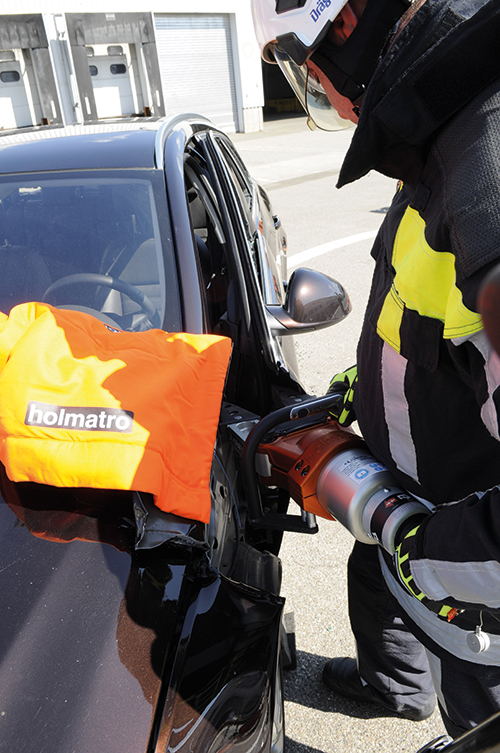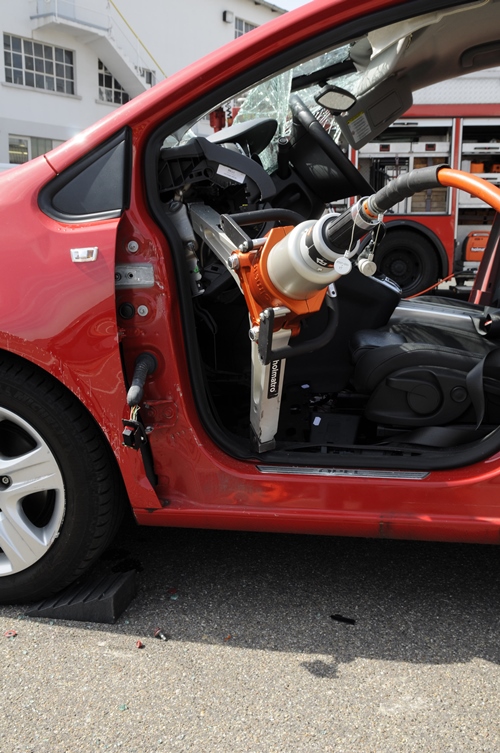Is Extrication Getting Easier? (Part 2)
In my last blog I claimed that extrication (in general) is getting easier. I thought it would be a good idea to offer a few practical examples and explain in more detail why I believe this to be the case.
Door removal
Firstly, removing doors to gain access: my preference has always been to spread doors at the hinge side. There is a distinct difference between performing this technique on an older car (when we train) as opposed to a new vehicle we encounter on the road. As I have previously explained, the construction on newer vehicles is far stiffer and a consequence of this is, that the material does not ‘rip’. On older vehicles the construction itself was relatively weak meaning that when we did attempt to spread a hinge, very often the A pillar would rip and fail before the hinge. On newer vehicles this very rarely (if ever) happens. What we witness more and more is the hinge (in particular the hinge pin) being the weakest link and failing first. This makes this process far easier and as a consequence, quicker. This lack of ‘ripping’ means that smaller combi tools are now even more effective for gaining entry as a wide opening is not required.

Spreading the hinges of newer vehicles tends to be far less complicated
Stabilisation
I spend a lot of time cutting new vehicles and seeing what impact they have on our current techniques. Although stability of the vehicle is important for medical reasons, we have always understood that placing stability blocks under the sill (rocker channel) provides support for the use of hydraulic tools when we perform evolutions such as a dash lift or dash roll. In the last few years however, I have found that this area of the vehicle has increased so greatly in strength (and more importantly, stiffness) that this is very often not required. This, in some cases, may assist rescuers on scene (especially where stability equipment is scarce). Remember though, this is not a reason not to stabilise the vehicle!

Newer vehicles often do not require the use of stability blocks to prevent further deformation
Glass management
More and more often I also encounter new cars where laminated glass is used in every window (not just the windscreen). In effect, this means that our glass is managed and does not require removal prior to the use of hydraulic tools; easier and quicker. In addition, leaving the glass in situ (in extreme weather) means that the patient is not exposed to the environment. Of course, laminated glass in situ may restrict access (especially in an emergency) so this must be planned for.
Conclusion
My experience leads me to believe that using hydraulic tools on newer vehicles is easier. I find myself ‘expecting’ results with far less left to chance. Older car construction, by its nature, means that it is hard to predict what will happen when performing some of the evolutions described above.
As ever, I welcome your comments.
Ian Dunbar